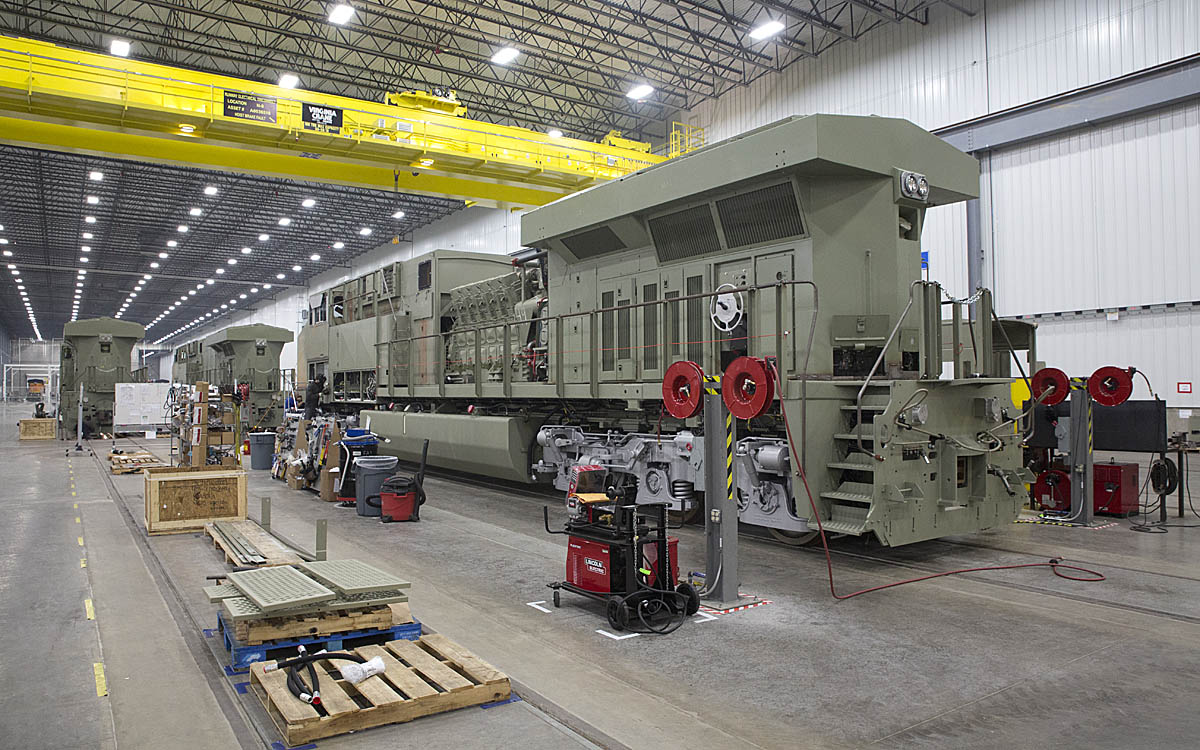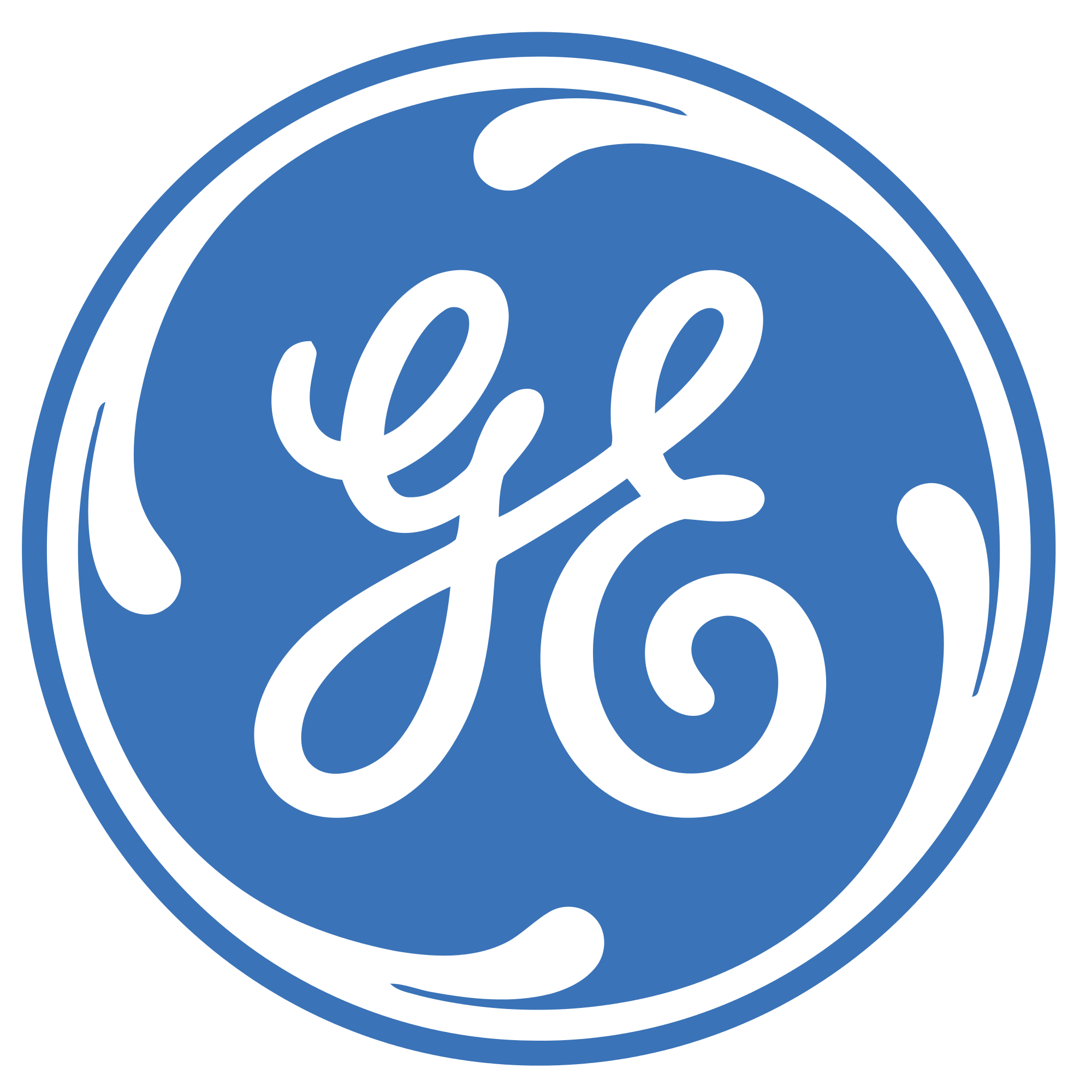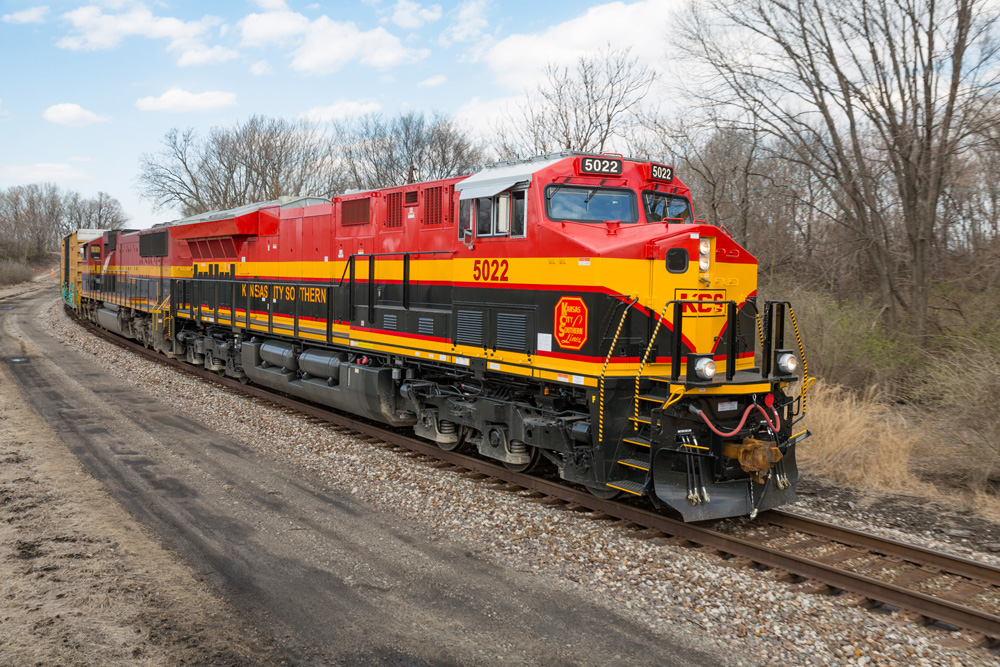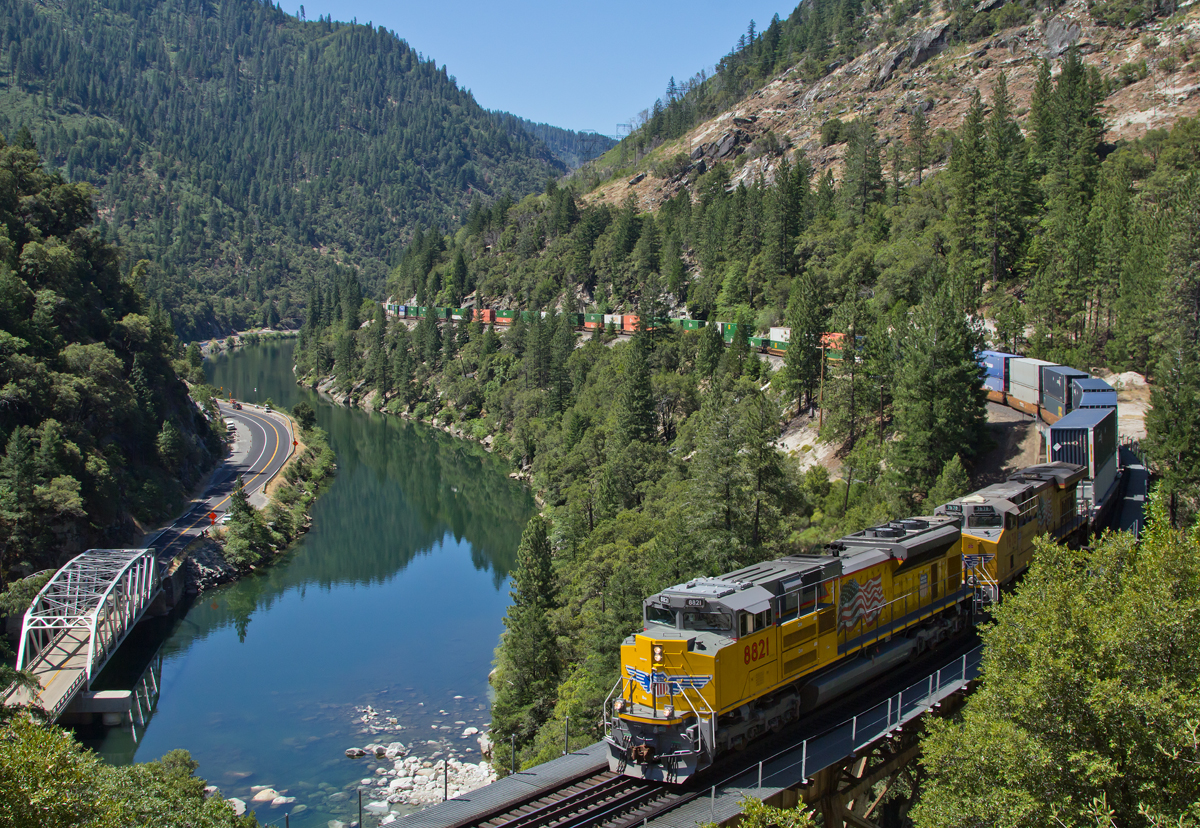Complete shut down
Yep, GE could sell all of the business assets Gordon Gekko-style, with Building 10 in Lawrence Park, Pa., becoming a giant indoor zip line course. Why? Because they can.
PROS: [Crickets chirping.]
CONS: The locomotive (and heavy duty machine) market is at the bottom of its business current cycle, so a sale would bring the lowest possible prices on physical assets. One unanswered question is which company will hold all the patents that GE Transportation workers have racked up over the years. If patents and intellectual property remain with the core of GE Corp., then liquidation is even less likely because the patents may have as much or more value than land or buildings in this technology-driven machine age.
GE-Alstom-Siemens
If Alstom and Siemens can merge, why not Alstom, Siemens, and GE?
PROS: French and German officials from both the European companies say they want to better compete with China’s CRRC — already the world’s largest railroad builder and supplier. And GE Transportation would fill a niche that neither company has: heavy-haul diesel electric locomotives. Plus Siemens and Alstom have as good or better connections than GE in emerging markets such as Africa, the Middle East, and Asia — and especially in passenger rail where GE has lagged for years.
CONS: Politics. The Siemens-Alstom merger is under review by European Union regulators now and it’s hard to imagine stalling talks to include a huge American partner. Plus GE Transportation makes mining equipment and gear boxes in addition to locomotives while Alstom-Siemens would be focused on rail. Also remember that U.S. politicians will be keen to keep jobs in Pennsylvania and Texas and ownership in the U.S. as a matter of pride and votes.
GE-Alstom or GE-Siemens
OK. So maybe there is something GE could offer Siemens or Alstom that would make it a better choice. It would be a double-cross to call off the Siemens-Alstom merger, but it’s nothing personal, just business — right?
PROS: Siemens and Alstom lack market share in heavy-duty diesel electric locomotives. So a merger with GE makes either instantly competitive in heavy haul freight applications going head-to-head with China.
CONS: Politics again. Breaking up a Siemens-Alstom merger would show disunity in Europe at a time when French and German politicians want to show only unity. The proposed merger is almost a corporate metaphor harkening back to the French-German coal and steel community of the 1950s that helped bring prosperity to western Europe after World War II.
GE-EMD
Aw, heck. Just let the two American locomotive manufacturers merge and get it over with.
PROS: This makes total sense from a manufacturer’s standpoint. A Caterpillar-owned GE-EMD would corner the heavy-haul market worldwide. The company could select and use the technologies that work best and deploy them: GE, EMD, or Caterpillar. The company would be based in the U.S. with mostly North American suppliers. Cutting the total number of jobs would also likely bring more stability for remaining workers and more certainty of work for suppliers. A combined company might even make better products than ever.
CONS: Can you say Sherman Anti-Trust Act? GE-EMD would be not just a U.S., but a worldwide monopoly for heavy-duty diesel-electric freight locomotives. If you think that that is too narrow a category, consider when was the last time you saw a Chinese, French, or German locomotive hauling 3-mile-long coal, double-stack, or grain trains. Never, you say? Case closed.
Think about it, GE Transportation is not merely a railroad supplier, it is a heavy-duty machine manufacturer. Their products happen to roll on rails as well as rural mountain roads. Engines from Grove City, Pa., can propel ocean-going vessels too. Pick a heavy machine manufacturer, or an engine maker, and sail it off into the sunset with GE Transportation.
PROS: If you are a heavy equipment maker, you compete with Caterpillar. Adding GE Transportation gives you added heft and diversity to do the job. And overall branding could be a bonus to certain customers who could plow fields and harvest corn with the same company that will haul the crop to market and power the barge that delivers it overseas. (Think of the financing deal for a farming cooperative-owned short line!)
CONS: The rail assets get lost in these kinds of transactions. Locomotives are a big part of what GE Transportation does but would mean little to Cummins, which already has other locomotive makers (Siemens) as customers. Oh, and while locomotives are in a downturn, so is agriculture and mining. Any company looking to make this move would have to have lots of cash and care little about short term pestering from Wall Street. AND, the customers are much different. CaseIH, for instance, will sell fleets to corporate customers, as well as a one-off tractor to the family farm down the road. The only companies that want or need locomotives are railroads or companies that serve railroads.
Berkshire Hathaway-GE
Notice how I flipped GE’s position in the subhead? Berkshire Hathaway, the famed corporate child of even more famous investor Warren Buffet, could likely buy GE Transportation with cash or stock without blinking an eye. Why, it could even be a division of BNSF Railway, railfans rejoice!
PROS: Berkshire-owned BNSF Railway could have a steady source of locomotives forever, and the cross-pollination of talent between manufacturing and operations are obvious. GE’s stock is already being pummeled by investors making the GE parent company and all its components significantly undervalued for the long-haul, making them more ripe for a value investor, such as Buffet, who has an affinity for good companies with low self esteem. Say what you will, railroads will need new locomotives again someday.
CONS: The opposite problem of John Deere applies here: the other stuff GE does just won’t matter very much and doesn’t fit neatly into Berkshire’s existing portfolio. AND, the locomotive business is cyclical, something that Buffet has steered away from in the past. All in all, this is more a fantasy than anything.
Selective Sale
OK, if every possible combination or outright sale seems like it has significant downsides, does anything have a big positive? Yes. GE could surgically split GE Transportation into component parts that are much more attractive for sale. This would work as long as the appropriate patents and intellectual property go with each piece.
PROS: Remember American Locomotive Co.? It could return with a reinvigorated locomotive division that is free to make a go of it alone with the right investor or merge with foreign railroad suppliers (hint, hint, Bombardier), U.S. freight car manufacturers, or a bank that wants to produce and lease locomotives. Heavy machine makers can take the pieces that make gear boxes and someone else can take diesel engines, and GE Corp. gets the cash.
CONS: This precision tinkering takes time. GE Corp. officials say they want to make deals within the next year or two. That means that they would have to already be in negotiations with potential buyers and know the markets pretty well so they can make alignments and transitions as smooth as possible. Even the best, most talented executives can fail at this, so asking GE to make several such transactions in a short time is asking a lot.
Go-it alone
Spin-off a new company for existing shareholders to own. Call it — Great Lakes Big Machines.
PROS: Well, that would be easiest for GE Corporate officers. They can wash their hands of the whole thing and then the market will decide what happens if Great Lakes sinks or swims.
CONS: We don’t know the financials. GE’s 2016 annual report says the division made $1.1 billion in profit on $4.7 billion in sales — which is really profitable. But, um, may I see a full financial statement for the division, and not just pretty overview charts? What portion of GE Transportation’s profitability is because GE is GE and has deals around the world and locomotives were part of the package? Only a select few inside the company know the answer. And then we get back to the question about intellectual property. More than half — $2.4 billion — of GE Transportation’s 2016 sales came from services, according to the annual report. More and more software today, including some of the software GE installs in locomotives worldwide, is known as SaaS — or software-as-a-service. Much of that software is already tied to GE Digital, a different division. So in a spin-off to shareholders, who owns the right to revenue on the software? The answer makes all the difference in the world.
UPDATE: Additional section, “Go-it alone.” Nov. 16, 2017, 1:41 p.m. Central time.
















I seriously do not expect to see Caterpillar to be getting rid of Progress Rail.Cat is so big today that much of is not connected to their core construction equipment products.
Consider that Caterpillar’s new CEO Jim Umpleby has made similar commitments to focus on what is most profitable. That is not rail. Expect Progress Rail/EMD to be for sale before long. Then what?
French or German manufactured locomotive and 3-mile-long coal, double-stack, or grain train —
Check out the IORE:type of locomotives and Malmbanan in Sweden. Those machines were built in Kassel. The trains could be 2 km long but they arent because that would create a train routing mess.
GE management may be a little optimistic in their desire to sell the Transportation Division in one to two years, particularly when the locomotive business is down. It took GM 10 years to find a buyer(s) for EMD, starting around the mid 1990s.
How about GE-Wabtec. Motive power industries already uses GE engines. WAB has moved into an expanded presence in the railroad supplier business.
Another hedge fund at work, “increasing value” for GE shareholders. What ever happened to GE’s reputation under Welch as being one of the best managed companies in the US?
Despite the current new order drought, Erie is keeping occupied with rebuild work and export locos. For a number of years now, locos per se, have been marginally profitable. Roughly 2/3ds of the divisions profits derive from after-market sales and service. Erie’s future is more likely to depend on it’s multi-year value as a tax “loss” and tax carry-for ward than its productive value in a recovered locomotive market. It all depends on how short term the boys with the green eye-shades in Boston are in considering pressure from Trian partners to juice GE’s stock price. If the wrecking ball decends on Erie, or a fire-sale is consummated, we’ll know the Wall St. go-go boys prevailed. Could be someone might pull off a Penske-like purchase of Detroit diesel at its nadir and subsequent revival as a major player . It will be interesting to see just how reckless and destructive or how patient and constructive the execs can be in managing a business that requires considerable capital investment
and years of refined developement to create marketable products for a rollercoaster sales cycle. The Chinese inspired materials binge created a trillion dollar overinvestment that is taking years to digest. The weak and impatient will not survive, if the former, or prosper, if the latter.
David Busse,
You mentioned EnPro building the Alco 251F engine. Do you know if this one would be a “bolt in” replacement for an original 251 in an Alco locomotive body? The reason I ask is that my museum group has an old FA-1 cab unit that does not have a prime mover anymore. It would be neat if we could get a new engine-generator set to restore it with.
I have mentioned it before, but what about an alliance/sale to EnPro, the holding company that owns F-M and builds Alco 251F and Colt-Pielstick diesels plus the legendary line of FM OP’s? Imagine GE locomotives marketed under the F-M/Alco brand. More important, EnPro’s a huge military supplier and a big name in the marine
Propulsion world where EMD/Cat is huge (GE an up and comer)..it would give them another element (GE engines) to sell the military. EnPro doesn’t have the cash for a merger? Get Uncle Warren to help with financing—he has done this before (recall CapCities/ABC merger of 1986).
I think GE should just spin it.
John Deere Locomotive Products – nothing pulls freight like a Deere! Green and yellow locomotives, yeah.
What about Bombardier
Saying this is “informed speculation” is like saying you got a good investment tip from Daffy Duck. And I think I would probably give more credence to Daffy………………
What about a purchase by CRRC?…would get them in the North American market where they currently have little or no presence.
What about the Japanese? In Asia big “conglomerates” are not frowned upon like by Wall Street (Unless your a Mega Tech Company like Google, Apple, or Amazon) so Hitachi or Kawasaki could be a good fit, or perhaps the Koreans? Heck, the Chinese might want it too!
How about a ship builder as a buyer? They understand building big machines, and dealing with big customers.
Ingalls Shipbuilding, here’s your chance to redeem yourself.
I would think it would be combination of the last two. First an initial sale to a larger investment firm (likely not B-H, but who knows) and then over the course of several years that initial investment firm would divide and sell-off the various divisions to other investment firms or entities already established in a given industry. This would allow a quick sale for GE, but would give a potential buyer a way to maximize their return over the next decade or so. Given the typical service life of a GE loco, I imagine in about 10-15 years there will once again be an increased demand in new locomotives…
Could GE Transportation stand alone and be profitable?